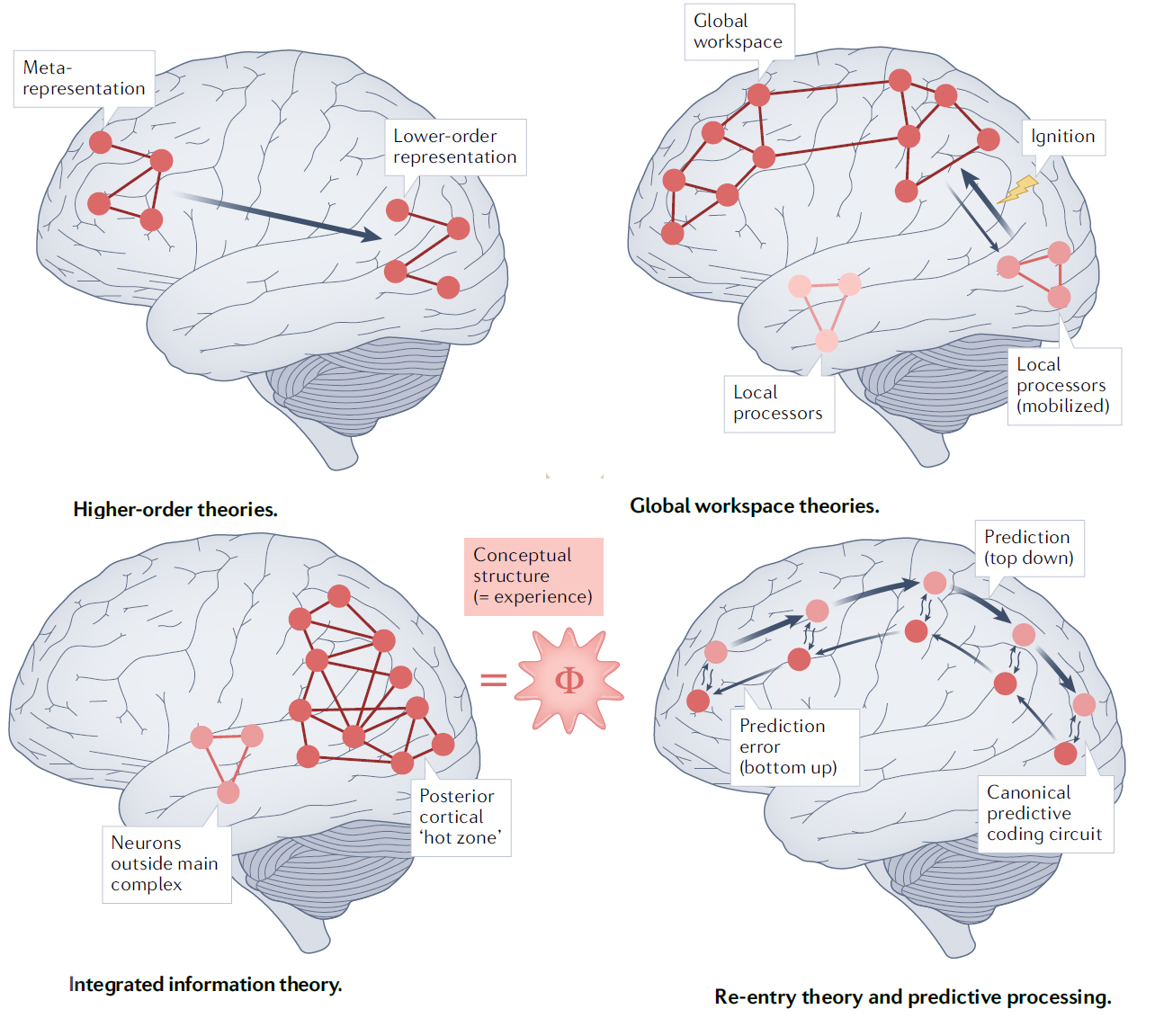Monday, 2 January 2023
Theories of consciousness
 .
.
Today I’d like to tell you about an article that you really shouldn’t miss if you’re interested in the various theories of consciousness in the cognitive sciences: “Theories of consciousness”, by Anil K. Seth and Tim Bayne, published in Nature Reviews Neuroscience in May 2022.
The authors start by identifying some of the classic problems in the study of consciousness. The first is the question of subjective experience itself, or, as philosopher Thomas Nagel famously put it, “what is it like to be” you, or me, or maybe even a bat? Next is the distinction between these subjective, phenomenological properties of consciousness and its functional properties, if indeed it has any. For example, has consciousness been encouraged and shaped by evolution? Does it play a particular functional role in the complex architecture of our cognitive systems? And lastly, why do we become conscious of one mental image or other piece of content and not another? And why do any given neuronal states cause us to have particular types of auditory, visual or tactile experiences—or, as philosophers call them, “qualia”—rather than others?
After presenting a table of no fewer than 22 different theories of consciousness, Seth and Bayne go into a bit more detail on four major families of such theories (see diagram above).
Higher-order theories posit that a mental state is conscious if it is the subject of a meta-representation—in other words, when this state is a representation of other, lower-order representations, such as sensory ones.
Global workspace theories suggest that conscious mental states are those that are globally accessible to a wide range of cognitive processes, such as attention, evaluation, memory and language.
Integrated information theories associate consciousness with the degree of integration of information and its causal power in physical systems, thus positing consciousness as a fundamental property of systems. (I discussed this theory briefly in an earlier post, available only on the French version of this blog.)
Theories of re-entry and predictive processing emphasize “top-down” influences in brain networks—in other words, the facilitating and modulating effects that central processes have on sensory inputs.
The authors then go on to evaluate these various approaches.
The Emergence of Consciousness | Comments Closed








